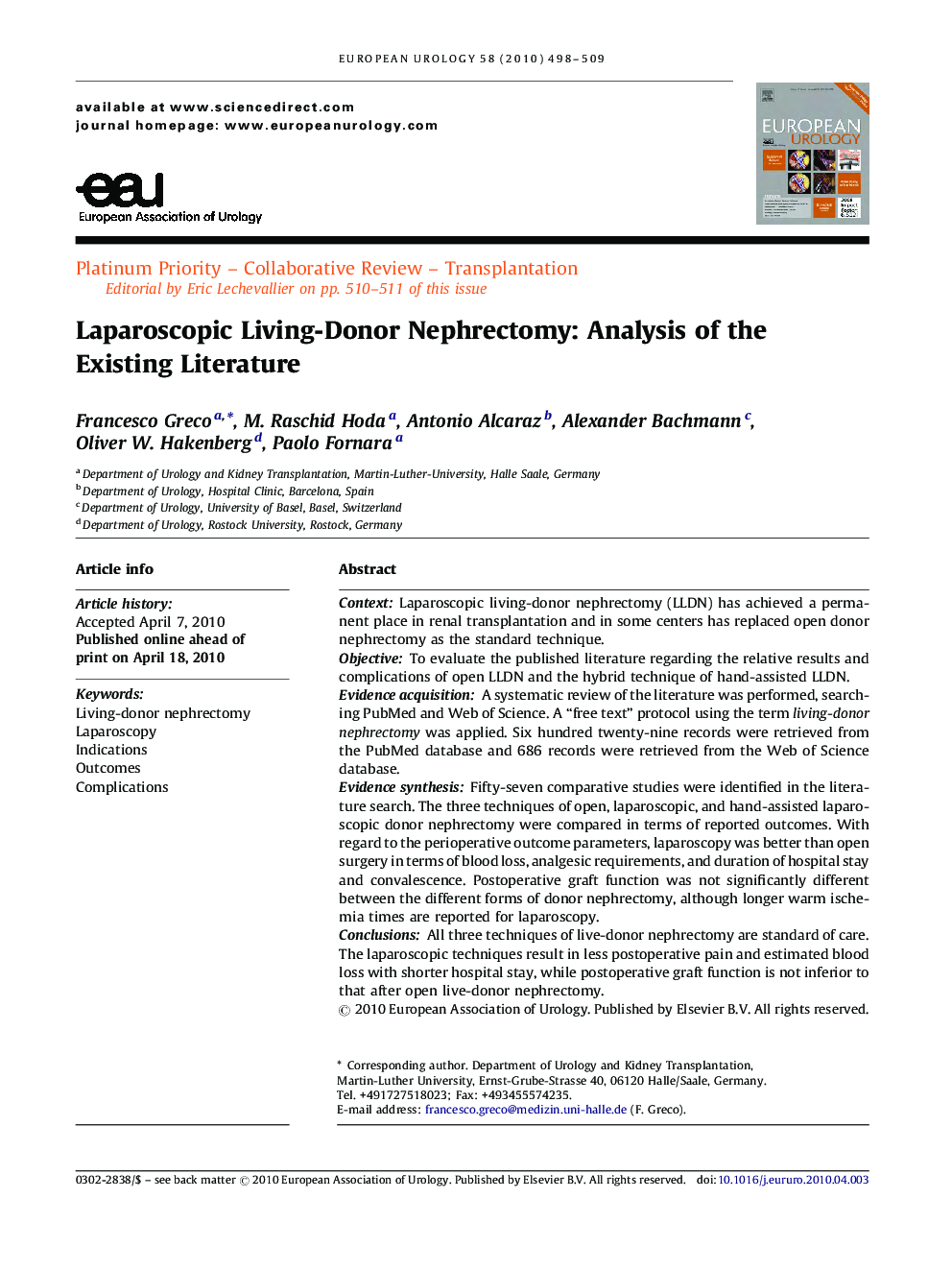| Article ID | Journal | Published Year | Pages | File Type |
|---|---|---|---|---|
| 3927521 | European Urology | 2010 | 12 Pages |
ContextLaparoscopic living-donor nephrectomy (LLDN) has achieved a permanent place in renal transplantation and in some centers has replaced open donor nephrectomy as the standard technique.ObjectiveTo evaluate the published literature regarding the relative results and complications of open LLDN and the hybrid technique of hand-assisted LLDN.Evidence acquisitionA systematic review of the literature was performed, searching PubMed and Web of Science. A “free text” protocol using the term living-donor nephrectomy was applied. Six hundred twenty-nine records were retrieved from the PubMed database and 686 records were retrieved from the Web of Science database.Evidence synthesisFifty-seven comparative studies were identified in the literature search. The three techniques of open, laparoscopic, and hand-assisted laparoscopic donor nephrectomy were compared in terms of reported outcomes. With regard to the perioperative outcome parameters, laparoscopy was better than open surgery in terms of blood loss, analgesic requirements, and duration of hospital stay and convalescence. Postoperative graft function was not significantly different between the different forms of donor nephrectomy, although longer warm ischemia times are reported for laparoscopy.ConclusionsAll three techniques of live-donor nephrectomy are standard of care. The laparoscopic techniques result in less postoperative pain and estimated blood loss with shorter hospital stay, while postoperative graft function is not inferior to that after open live-donor nephrectomy.
